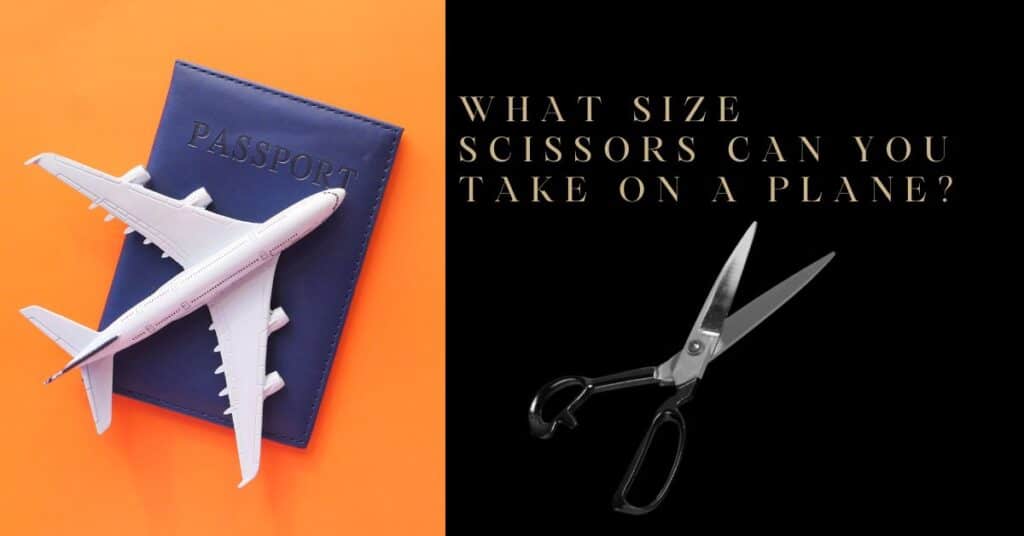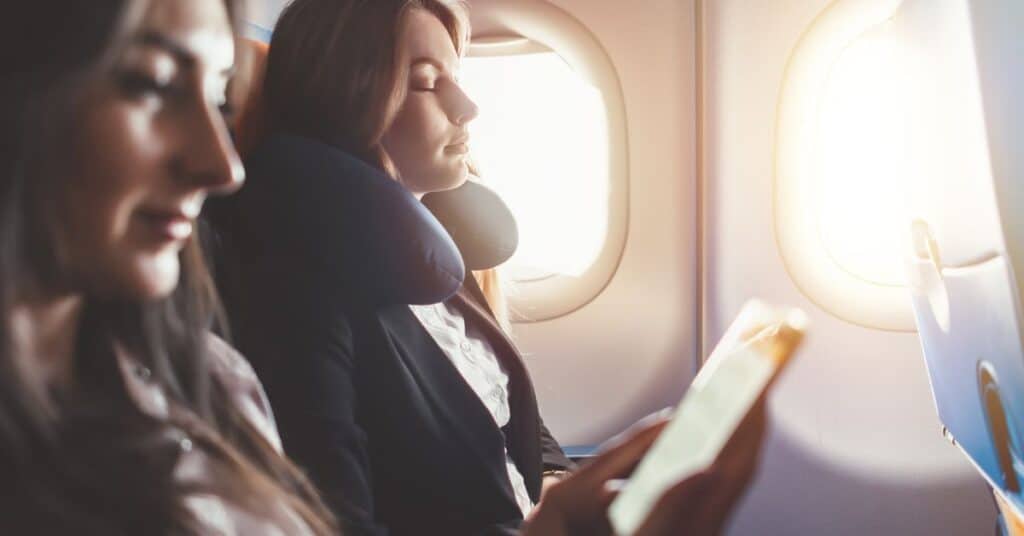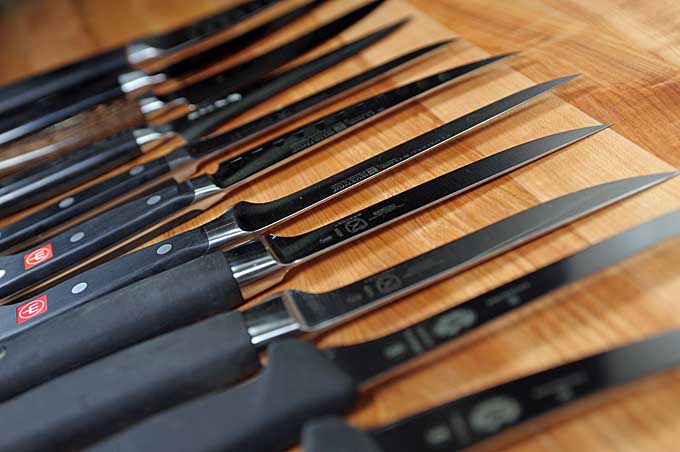If you’re wondering whether you can bring scissors on a plane, the answer is yes, but with some important caveats. Traveling with scissors requires a good understanding of the rules and regulations set by airlines and airport security.
In this comprehensive guide, we will explore what types of scissors you can bring on a plane, their size restrictions, and specific considerations for embroidery, nail, and sewing scissors.
what kind of scissors can you bring on a plan?
When it comes to the types of scissors you can bring on a plane, the general rule is that small scissors with blades measuring less than 4 inches are permitted in your carry-on luggage. These scissors are typically those with rounded tips, blunt edges, or child safety features. The reasoning behind this rule is that scissors with shorter blades are less likely to be used as weapons and pose minimal risk during a flight.
Read This Article: What is scissors?
However, while this is the general guideline, there can be some variations in interpretation and enforcement by security personnel at different airports. It’s always a good practice to pack your scissors in a way that makes them easily visible during security checks. Placing them in a clear, resealable bag or a dedicated case within your carry-on can help expedite the process and reduce the likelihood of any issues.
Additionally, if you’re carrying specialty scissors, such as medical scissors or tools necessary for a specific profession, it’s a good idea to carry a letter from a relevant authority (e.g., a doctor’s note for medical scissors) explaining the need for these items during your travel.
What Size Scissors Can You Take on a Plane?

The size of scissors you can take on a plane is a crucial factor when determining if they are allowed in your carry-on luggage. As mentioned earlier, scissors with blades shorter than 4 inches are generally permitted in your carry-on bag. These small scissors are commonly used for tasks like cutting paper, threads, or craft materials.
For scissors with longer blades, it’s recommended to pack them in your checked luggage rather than your carry-on. Scissors with longer blades can be seen as potentially more dangerous in the close quarters of an aircraft cabin, so airlines and airport security prefer to err on the side of caution.
When in doubt about the size of your scissors, it’s advisable to measure the blade length and confirm that it falls within the acceptable limit of 4 inches before packing them in your carry-on. Remember that individual airport security personnel may have some discretion in interpreting and enforcing these rules, so being prepared and following guidelines can help ensure a smooth travel experience.
Can You Bring Embroidery Scissors on a Plane?
Embroidery scissors are beloved tools for crafters and needlework enthusiasts, often with fine, pointed tips and precise blades. The good news for those who enjoy embroidery is that small embroidery scissors are generally allowed on a plane as part of your carry-on luggage. However, there are some important considerations to keep in mind.

Size Matters: As with other types of scissors, the size of the blades is a critical factor. Embroidery scissors with blades shorter than 4 inches are typically permitted. These smaller scissors are well-suited for delicate tasks like cutting embroidery threads, and they are less likely to be considered a security risk.
Pack Wisely: To ensure a hassle-free security check, it’s a good practice to pack your embroidery scissors in a way that makes them easily visible and accessible. Placing them in a clear, resealable bag or a small case within your carry-on can help security personnel quickly identify them and reduce the chances of any issues.
Alternative Options: If you have concerns about bringing your favorite embroidery scissors on your trip, consider using travel-friendly alternatives like thread snips with shorter blades or even a small pair of folding scissors that comply with the size regulations.
Remember that while small embroidery scissors are generally allowed, individual airport security personnel may have some discretion in interpreting and enforcing these rules. Being prepared and following guidelines can help ensure you can continue pursuing your embroidery projects even while traveling.
Can You Bring Nail Scissors on a Plane?
Nail scissors are commonly used for personal grooming, and many people wonder if they can bring them on a plane. The answer is yes, but there are specific rules to follow:
Blade Length: Nail scissors with blades shorter than 4 inches are typically allowed in your carry-on luggage. These small scissors are considered safe for personal use and are less likely to be used as weapons.
Safe Packing: To avoid any issues during the security check, it’s advisable to pack your nail scissors in a way that’s easily accessible for inspection. Placing them in a clear, resealable bag or a small toiletry kit within your carry-on can help expedite the process.
File Instead: If you’re concerned about carrying nail scissors, an alternative option is to pack a nail file or nail clippers with no attached scissors. These tools are generally accepted without any issues and can serve the same purpose for grooming while on your trip.
Check Specific Airline Rules: While the general guidelines are consistent, it’s always a good idea to check with your specific airline as they may have slightly different rules or recommendations regarding nail scissors.
By adhering to these guidelines, you can maintain your personal grooming routine while traveling without any problems at airport security.
Can You Bring Sewing Scissors on a Plane?
Sewing scissors, like embroidery scissors, are essential tools for crafters and seamstresses. Here’s what you need to know about bringing sewing scissors on a plane:
Size Restrictions: Small sewing scissors with blades shorter than 4 inches are typically allowed in your carry-on luggage. These scissors are suitable for tasks like cutting threads and are considered safe for air travel.
Pack Thoughtfully: To ensure a smooth security check, pack your sewing scissors in a manner that makes them easily visible and accessible. Placing them in a clear, resealable bag or a designated case within your carry-on can help expedite the process.
Alternative Options: If you’re concerned about carrying your regular sewing scissors, consider using travel-friendly alternatives like thread snips with shorter blades or investing in a pair of small, folding scissors that comply with size regulations.
Check Airline Policies: While the general rules apply, it’s a good practice to check with your specific airline for any additional guidelines or requirements they may have regarding sewing scissors.
By following these guidelines, you can continue your sewing projects while traveling without worrying about issues at airport security.
Conclusion:
In conclusion, you can bring scissors on a plane, but the key is to adhere to the size limitations and choose scissors with blades shorter than 4 inches for your carry-on luggage.
When in doubt, it’s always a good idea to check with your airline and review the specific security guidelines of the airport you’re departing from. Safe travels!
FAQs:
Can I bring large scissors in my checked luggage?
Yes, scissors with larger blades can be packed in your checked luggage.
Are there any restrictions on scissor types, apart from size?
Generally, no, as long as they are intended for personal use or crafts. However, novelty scissors with unique blade shapes may raise questions at security.
Can I bring sewing needles and pins with my sewing scissors?
Yes, you can bring sewing needles and pins in your carry-on or checked luggage, but ensure they are securely packed to prevent accidents.
What should I do if airport security questions my scissors?
Cooperate with security personnel and be prepared to provide an explanation for why you’re carrying them. Having the airport’s rules handy can be helpful.
Can I bring scissors on an international flight?
Yes, you can bring scissors on international flights, but it’s essential to be aware of the rules of both your departing and arriving countries, as they may have different regulations.




